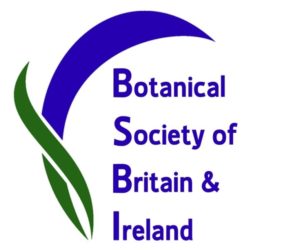Kirkcudbrightshire Botany Group, Barfil Farm, 10th June 2022
This has got to one of the top three grassland sites in the Vice-county, the others being SSSIs (The Cleugh near Dalry, Skyreburn Grasslands near Gatehouse). And it certainly lived up to that reputation, exceeding even what I’d expected. 11 of us shared the day and enjoyed the wide variety of closely intermixed habitats and soil types. And the corresponding species list of 159 species identified – and several not! – from the unimproved grassland and marsh/mire systems that we looked at.
For those who couldn’t make it, the farm is being managed on a very conservation-based approach with grazing adjusted to get the best from the various habitats. The area is so rich that we didn’t have time to look at the moss/mire, the extensive woodlands or the rush pastures – another time perhaps. We made our way to the nearest unimproved grass pasture, stopping first at the circular dyke enclosing a rock outcrop and seeing our first Spignel Meum athamanticum in flower there.
Farmers used to remove this plant as it tainted the cow’s milk with an aniseed flavour. We were to see perhaps a thousand or more on the various raised knowes in other fields, the spignel often surrounded or interspersed with more, and concentrated, populations of Bulbous Buttercup Ranunculus bulbosus (reflexed sepals), something that I have never seen anywhere else in the VC, and with little sign of the other two common buttercups (Meadow Buttercup Ranunculus acris and Creeping Buttercup Ranunculus repens) nearby. Another white umbellifer, Pignut Conopodium majus, was also abundant and provided a leaf structure comparison between it and spignel. Later in the day we found Yarrow Achillea millefolium which again provided a nice comparison with Spignel, Pignut and Yarrow. In the damper grassland another white umbellifer, Whorled Caraway Carum verticillatum, offered yet another leaf structure arrangement. Spignel has joint UK headquarters with Perthshire, while Whorled Caraway is characteristic of western grasslands from SW England, South Wales and the Lake District northwards through to Argyll.
The knowes also held Hairy Oatgrass Koeleria macrantha, Matgrass Danthonia decumbens, Early Hairgrass Aira praecox and in some places Lady’s Bedstraw Galium verum along with Mouse-ear Pilosella officinalis – indicative of some mineral-enrichment of the close-to-neutral soils. But sadly lacking Thyme Thymus trichophyllus. Lunch was taken on one knowe amidst spignel.
There were a few wetter areas between the knowes with Northern Marsh Orchid Dactylorhiza purpurella scattered around and several spotted orchids still in bud and hence unidentified! These damp areas varied from acidic with Bog-mosses Sphagnum spp., Common Sedge Carex nigra, Star Sedge Carex echinata, White Sedge Carex curta, Marsh Lousewort Pedicularis palustre to less acidic, almost neutral, areas with, Ragged Robin Silene flos-cuculi, Marsh Marigold Caltha palustris, Pennywort Hydrocotyle vulgaris. Some really wet areas held Common Spike-rush Eleocharis palustris, Bottle Sedge Carex rostrata and Marsh Cinquefoil Comarum palustre.
After lunch we made our way down to the northern edge of the Milton Loch SSSI to explore the marsh and mire there, while Bob sampled the aquatic bugs of the loch, admittedly somewhat hampered by the strong onshore winds. The mire was largely of Purple Moorgrass Molinia caerulea interspersed with Soft Rush Juncus effusus, Greater Birdsfoot Trefoil Lotus pedunculatus, more sedges including the infertile hybrid Carex x involuta with its flaccid and empty heads, Flea Sedge Carex pulicaris, Glaucous Sedge Carex flacca, Carnation Sedge Carex panicea and a solitary Round-leaved Sundew Drosera rotundifolia. Closer to the water’s edge, floating vegetation (schwingmoor) held Bog Bean Menyanthes trifoliata, Bulrush Typha latifolia, upright Bur-reed Sparganium erectum, Creeping Willow Salix repens in abundance, Marsh Ragwort Senecio aquatilis, Water Mint Mentha aquatica, Purple Loosestrife Lythrum salicaria and Gipsywort Lycopus europaeus with its pointed oval, serrated leaves. The loch gave us Lesser Pondweed Potamogeton pusillus. This area was separated from the adjoining fields by a band of intermediate ground with many common meadow and damp-loving species but nothing out of the ordinary.
In all, we had 159 species in this single monad (NX8472), the highlights being of course the Spignel but also the wide range of differing habitats often in close proximity. And of course the two Clydesdales and their foal…..
David Hawker
BSBI county recorder for Kirkcudbrightshire VC73

